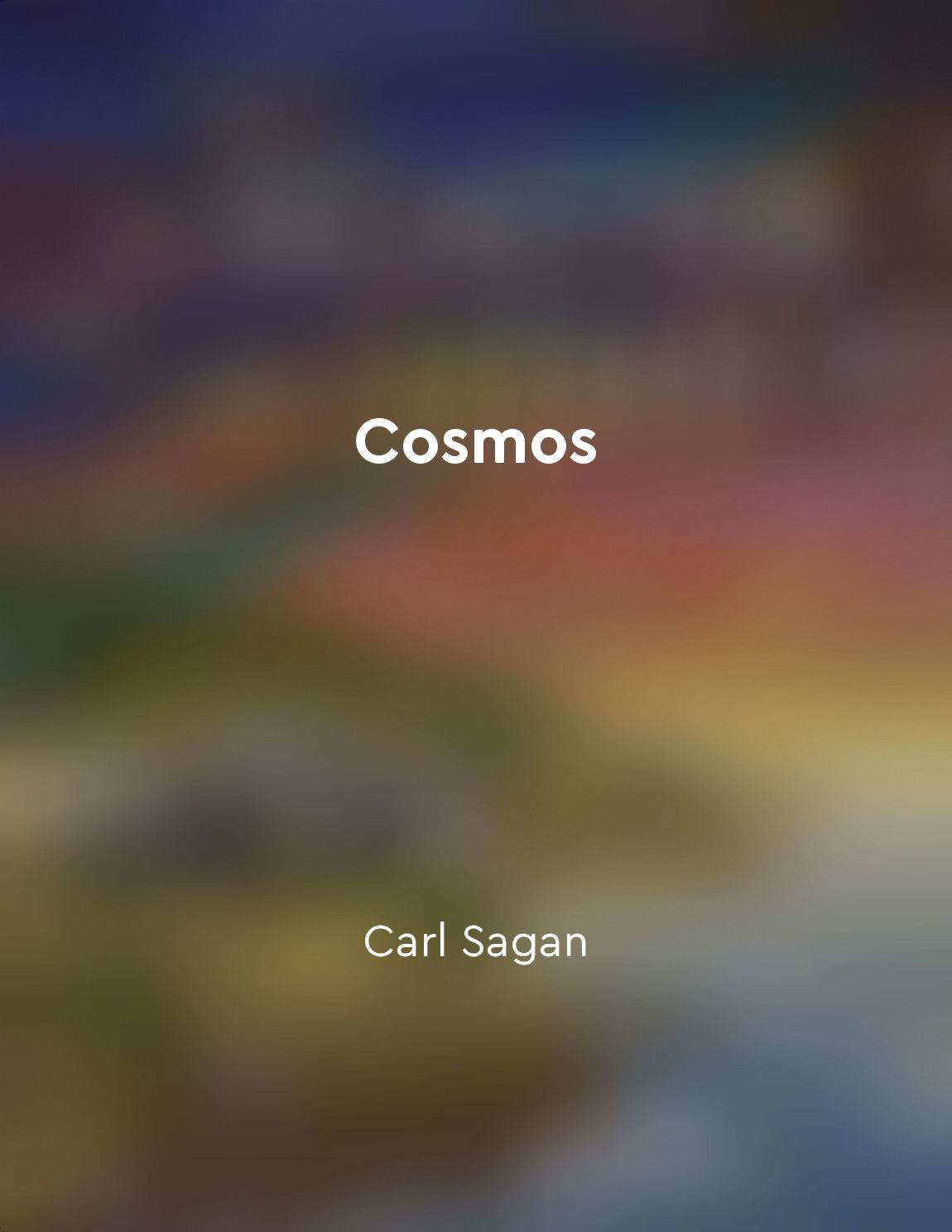Connecting theoretical ideas with observational data from "summary" of Endless Universe by Paul J. Steinhardt,Neil Turok
The process of connecting theoretical ideas with observational data is a crucial step in the field of cosmology. Theoretical ideas can be elegant and compelling on their own, but they must be tested against observational data to determine their validity. Observational data, on the other hand, can provide insights into the workings of the universe, but it often requires theoretical frameworks to make sense of it. In the book "Endless Universe," the authors emphasize the importance of this connection between theory and observation. They explain how theoretical ideas about the universe's origins and evolution can be tested and refined through observations of the cosmic microwave background radiation, the distribution of galaxies, and other astronomical phenomena. Theoretical ideas such as inflation, dark matter, and dark energy have been developed to explain various aspects of the universe's structure and behavior. These ideas are based on mathematical models and physical principles, but they need to be compared with observational data to see if they accurately describe the universe we see around us. Observational data from telescopes and satellites provide valuable clues about the universe's past, present, and future. By analyzing this data, scientists can test different theoretical models and determine which ones best fit the observations. This iterative process of theory development and data analysis is at the heart of modern cosmology. The authors highlight the challenges and uncertainties involved in this process, noting that cosmological models are always works in progress. New observations may require revisions to existing theories, or even the development of entirely new ones. This dynamic interplay between theory and observation drives progress in the field and leads to a deeper understanding of the universe.- The concept of connecting theoretical ideas with observational data is central to the scientific method and essential for advancing our knowledge of the cosmos. By combining theoretical insights with empirical evidence, cosmologists can build a coherent picture of the universe and uncover its hidden secrets.
Similar Posts
Superstition can lead to harmful beliefs and practices
Superstition can be a dangerous force in society, leading people to believe in harmful practices and beliefs that have no basis...
Addressing observational challenges in cosmology
The field of cosmology faces a significant challenge when it comes to making accurate and reliable observations. The vast expan...
The Big Bang theory has limitations
The Big Bang theory, while successful in many respects, has limitations that prevent it from providing a complete and satisfact...
Energy density fluctuations may support cyclic model
Energy density fluctuations, which are tiny differences in the amount of energy present in different regions of space, could pl...
The moon influences tides on Earth
The gravitational pull of the moon affects the waters of the Earth in a phenomenon known as tides. As the moon orbits our plane...
Energy can be transferred and transformed but never created or destroyed
The fundamental principle of energy conservation states that energy cannot be created or destroyed, only transferred or transfo...

The cosmos holds endless possibilities
The cosmos is vast and mysterious, stretching far beyond what our minds can comprehend. Within this vast expanse lie countless ...
Hawking radiation can escape black holes
The idea that black holes can emit radiation was first put forward by Jacob Bekenstein and Stephen Hawking. They showed that wh...
Ice ages have occurred
It is a fact that ice ages have occurred. Scientists believe that over the past 2.4 billion years, the Earth has experienced at...

